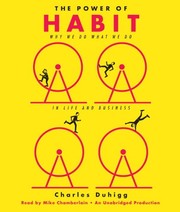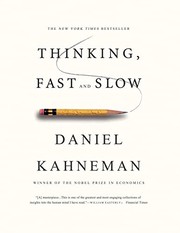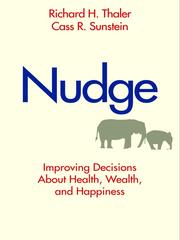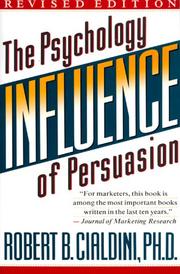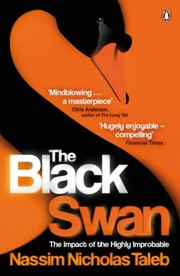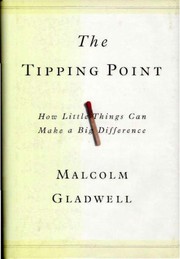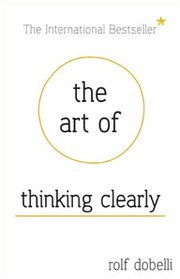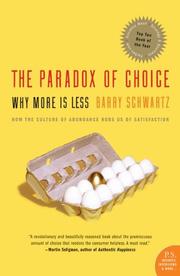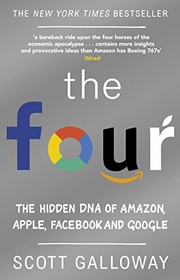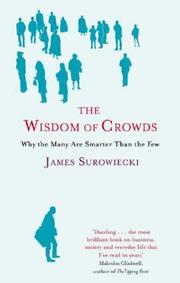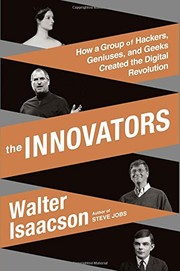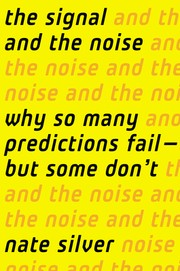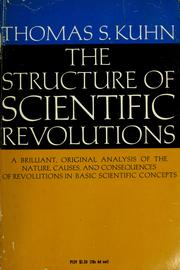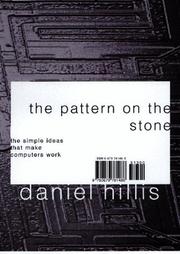Welcome to the fascinating world of patterns! Whether you’re a fan of art, mathematics, or design, there’s something inherently captivating about the repetition and symmetry found in patterns. If you’re looking for a good book on patterns, look no further. We’ve compiled a list of the 20 best patterns books that delve into the history, science, and beauty of patterns. From textile design to fractal geometry, these books will inspire and educate you on the captivating world of patterns.
Contents
- 1 20 Best Books About Patterns
- 2 The Power of Habit
- 3 Thinking, Fast and Slow
- 4 Nudge: Improving Decisions About Health, Wealth, and Happiness
- 5 Influence: The Psychology of Persuasion
- 6 Predictably Irrational: The Hidden Forces That Shape Our Decisions
- 7 Sapiens: A Brief History of Humankind
- 8 The Black Swan: The Impact of the Highly Improbable
- 9 The Tipping Point: How Little Things Can Make a Big Difference
- 10 The Innovator’s Dilemma: When New Technologies Cause Great Firms to Fail
- 11 The Lean Startup: How Today’s Entrepreneurs Use Continuous Innovation to Create Radically Successful Businesses
- 12 The Design of Everyday Things
- 13 The Art of Thinking Clearly
- 14 The Paradox of Choice: Why More Is Less
- 15 The Four: The Hidden DNA of Amazon, Apple, Facebook, and Google
- 16 The Wisdom of Crowds
- 17 The Innovators: How a Group of Hackers, Geniuses, and Geeks Created the Digital Revolution
- 18 The Signal and the Noise: Why So Many Predictions Fail – But Some Don’t
- 19 The Fifth Discipline: The Art & Practice of The Learning Organization
- 20 The Structure of Scientific Revolutions
- 21 The Pattern On The Stone: The Simple Ideas That Make Computers Work
- 22 Conclusion
- 23
20 Best Books About Patterns
The Power of Habit
by Charles Duhigg
The Power of Habit by Charles Duhigg is a fascinating exploration of the science behind why we do what we do. This insightful book delves into the world of human behavior, revealing the power of our habits and how they shape our lives. Duhigg takes readers on a journey through the neurological pathways that form our habits, and how they can be changed. Through captivating real-life stories and scientific research, he demonstrates the profound impact that habits have on individual and collective success. Whether you’re looking to break a bad habit or cultivate a positive one, this patterns book provides valuable insights and practical strategies for transformation. The Power of Habit is a compelling read that will leave you with a deeper understanding of the patterns that govern our lives and how to harness their power for personal growth and success.
Thinking, Fast and Slow
by Daniel Kahneman
Thinking, Fast and Slow by Daniel Kahneman is a captivating exploration of the human mind and the two systems that drive the way we think. In this compelling patterns book, Kahneman introduces the concept of two modes of thinking: System 1, the fast and intuitive system, and System 2, the slow and analytical system. With a wealth of research and real-world examples, Kahneman delves into the cognitive biases and heuristics that influence our decision-making, shedding light on the patterns that govern our thought processes. This thought-provoking book about patterns challenges readers to re-evaluate their own thinking habits and offers valuable insights into how we can make better decisions in our personal and professional lives. Whether you’re interested in psychology, decision-making, or simply understanding the intricacies of the human mind, this book on patterns is a must-read.
Nudge: Improving Decisions About Health, Wealth, and Happiness
by Richard H. Thaler and Cass R. Sunstein
Nudge: Improving Decisions About Health, Wealth, and Happiness is a groundbreaking book on patterns by Richard H. Thaler and Cass R. Sunstein. This influential book about patterns explores how small, subtle changes, or “nudges,” can significantly impact our decision-making processes. Thaler and Sunstein delve into the psychological and behavioral patterns that influence our choices, offering practical strategies to help individuals and organizations make better decisions. They emphasize the importance of understanding human behavior and designing environments that encourage positive choices, ultimately leading to improved outcomes in health, wealth, and overall well-being. Nudge is a thought-provoking and insightful read that challenges traditional thinking about decision-making and provides valuable insights into the patterns that shape our lives.
Influence: The Psychology of Persuasion
by Robert B. Cialdini
Influence: The Psychology of Persuasion by Robert B. Cialdini is a captivating book about patterns of influence and persuasion. Cialdini delves into the psychology behind why people say yes and how we can apply this knowledge to our advantage. Drawing on his extensive research, the author uncovers the six universal principles of influence that shape our decision-making process. Whether it’s the power of reciprocity, social proof, or scarcity, Cialdini offers valuable insights into the patterns of influence that govern our behavior. Through engaging anecdotes and real-life examples, Influence provides a fascinating exploration of the subtle tactics that can sway our choices, making it an essential read for anyone interested in understanding the art of persuasion.
Predictably Irrational: The Hidden Forces That Shape Our Decisions
by Dan Ariely
Predictably Irrational: The Hidden Forces That Shape Our Decisions by Dan Ariely is a captivating exploration of human behavior and decision-making. In this insightful book on patterns, Ariely delves into the irrational tendencies that influence our choices, revealing the hidden forces that drive our behavior. Through a series of engaging experiments and real-life examples, he uncovers the predictable patterns that govern our decision-making processes. This patterns book offers a fascinating look at the quirks of the human mind, shedding light on why we often make irrational choices and how these patterns can be harnessed to understand and influence behavior. Ariely’s compelling writing style and thought-provoking insights make Predictably Irrational a must-read for anyone interested in understanding the hidden patterns that shape our decisions.
Sapiens: A Brief History of Humankind
by Yuval Noah Harari
Sapiens: A Brief History of Humankind by Yuval Noah Harari is a captivating exploration of the patterns of human history. Through a thought-provoking blend of history, biology, anthropology, and economics, Harari delves into the patterns of human evolution, the rise of civilizations, and the development of societies. This patterns book examines how Homo sapiens became the dominant species on Earth, the impact of agriculture and the formation of empires, and the revolutions that have shaped the modern world. Harari’s insightful analysis challenges readers to reconsider their understanding of the past and contemplate the future of humanity. Sapiens offers a fresh perspective on the patterns of human behavior and the forces that have shaped our world, making it a must-read for anyone interested in understanding the intricate tapestry of human history.
The Black Swan: The Impact of the Highly Improbable
by Nassim Nicholas Taleb
The Black Swan: The Impact of the Highly Improbable by Nassim Nicholas Taleb is a thought-provoking book about the impact of rare and unpredictable events on our lives. Taleb introduces the concept of “black swans,” which are highly improbable events that have a massive impact and are often rationalized in hindsight. Through engaging storytelling and thought-provoking analysis, Taleb explores how black swan events shape our world and how we can better understand and navigate their impact. This patterns book challenges the traditional notion of predictability and encourages readers to embrace uncertainty and complexity. It’s a must-read for anyone interested in understanding the role of randomness and unpredictability in our lives and the world around us.
The Tipping Point: How Little Things Can Make a Big Difference
by Malcolm Gladwell
The Tipping Point: How Little Things Can Make a Big Difference is a fascinating exploration of the concept of ‘tipping points’ by Malcolm Gladwell. This insightful book delves into the idea that small changes or actions can lead to significant and unexpected outcomes. Gladwell examines the factors that contribute to the tipping point, drawing on examples from various fields such as sociology, psychology, and marketing. Through compelling storytelling and in-depth research, the book uncovers the patterns and dynamics that drive social epidemics and cultural shifts. Whether you’re interested in understanding the dynamics of human behavior, marketing strategies, or societal trends, this book about patterns is sure to provide valuable insights into the forces that shape our world.
The Innovator’s Dilemma: When New Technologies Cause Great Firms to Fail
by Clayton M. Christensen
The Innovator’s Dilemma is a groundbreaking book about patterns in business and technology that explores the reasons why successful companies fail when faced with disruptive innovations. Clayton M. Christensen presents a compelling argument that established companies often fall victim to their own success, as they become too focused on satisfying existing customers and fail to adapt to new, disruptive technologies. Through meticulous research and insightful analysis, Christensen uncovers the patterns of behavior and decision-making that lead to the downfall of once-dominant firms. The book offers valuable lessons for entrepreneurs, business leaders, and innovators, providing a roadmap for navigating the challenges of technological disruption and staying ahead of the competition. With its thought-provoking ideas and real-world examples, The Innovator’s Dilemma is an essential read for anyone interested in understanding the dynamics of innovation and success in the business world.
The Lean Startup: How Today’s Entrepreneurs Use Continuous Innovation to Create Radically Successful Businesses
by Eric Ries
The Lean Startup is a groundbreaking book on patterns, written by Eric Ries, that has revolutionized the way entrepreneurs approach business innovation. Ries introduces the concept of continuous innovation, emphasizing the importance of testing ideas quickly and efficiently to create successful businesses. The book provides practical strategies for entrepreneurs to develop and launch products that are more likely to succeed in the market. Ries also emphasizes the importance of adapting to customer feedback and making data-driven decisions to drive growth and profitability. The Lean Startup is a must-read for anyone looking to start a business or innovate within an existing organization, as it provides valuable insights and strategies for navigating the uncertain and ever-changing business landscape.
The Design of Everyday Things
by Don Norman
The Design of Everyday Things by Don Norman is a renowned book about design principles and human-centered design. It delves into the psychology of everyday objects, exploring how people interact with and interpret the world around them. This influential book on patterns discusses the importance of intuitive design, the impact of usability, and the significance of user experience. Norman’s insights and examples shed light on the ways in which design can either enhance or hinder the user’s experience, making it a valuable read for designers, engineers, and anyone interested in the intersection of technology and human behavior. With its engaging storytelling and thought-provoking analysis, The Design of Everyday Things is a must-read for anyone seeking to understand the role of design in our daily lives.
The Art of Thinking Clearly
by Rolf Dobelli
The Art of Thinking Clearly by Rolf Dobelli is a fascinating book about recognizing and avoiding common cognitive biases that affect our decision-making. It’s a book on patterns of human behavior, revealing the recurring errors in thinking that we all fall victim to. Dobelli explores a wide array of cognitive biases, from confirmation bias to the sunk cost fallacy, and offers practical advice on how to overcome them. With engaging examples and clear explanations, the book sheds light on the unconscious patterns that govern our thoughts and actions. Whether you’re a psychology enthusiast or simply interested in understanding your own thinking processes, this patterns book is a valuable resource for improving your decision-making skills and avoiding common pitfalls.
The Paradox of Choice: Why More Is Less
by Barry Schwartz
The Paradox of Choice: Why More Is Less by Barry Schwartz is a thought-provoking book on the concept of decision-making and the impact of having too many options. In this patterns book, Schwartz argues that while having choices is typically seen as a positive thing, too many options can actually lead to increased stress, anxiety, and dissatisfaction. He explores the psychological effects of decision-making and presents compelling evidence that having an abundance of choices can actually be detrimental to our well-being. Schwartz also offers practical advice on how to navigate the overwhelming array of choices in our modern world, ultimately advocating for a more simplified and mindful approach to decision-making. This book about patterns challenges readers to rethink their relationship with choice and offers valuable insights into the ways in which we can achieve greater satisfaction and fulfillment in our lives.
The Four: The Hidden DNA of Amazon, Apple, Facebook, and Google
by Scott Galloway
The Four: The Hidden DNA of Amazon, Apple, Facebook, and Google by Scott Galloway is a fascinating book on patterns that delves into the inner workings of these tech giants. Galloway, a renowned business professor, explores the commonalities that have led to the success of these companies, uncovering the patterns that have shaped their dominance in the digital age. Through insightful analysis and compelling storytelling, Galloway reveals the strategies, innovations, and cultural factors that have propelled these companies to the top of the global market. The book offers a deep understanding of the patterns behind their success, providing valuable lessons for businesses and entrepreneurs seeking to thrive in the digital landscape. The Four is a must-read for anyone interested in understanding the patterns that have defined the success of these tech giants.
The Wisdom of Crowds
by James Surowiecki
The Wisdom of Crowds by James Surowiecki is a fascinating exploration of collective decision-making and the power of group intelligence. In this thought-provoking book on patterns, Surowiecki argues that diverse groups of people are often better at solving problems and making decisions than individuals or experts. He explains how the aggregation of information and the diversity of perspectives within a crowd can lead to remarkably accurate predictions and insightful solutions. Through compelling examples from various fields such as economics, psychology, and politics, the author demonstrates how the wisdom of crowds can be harnessed to improve decision-making processes and achieve better outcomes. This patterns book is a compelling read for anyone interested in understanding the dynamics of group behavior and the potential of collective intelligence.
The Innovators: How a Group of Hackers, Geniuses, and Geeks Created the Digital Revolution
by Walter Isaacson
The Innovators: How a Group of Hackers, Geniuses, and Geeks Created the Digital Revolution by Walter Isaacson is a fascinating book about patterns in history. It delves into the interconnected stories of the brilliant individuals who have shaped the digital age, from Ada Lovelace and Alan Turing to Steve Jobs and Bill Gates. Isaacson explores the patterns of innovation and collaboration that have driven technological advancements, revealing the often overlooked contributions of teamwork and collective creativity. By tracing the patterns of invention and discovery, he illustrates how the digital revolution was not the result of solitary genius, but rather the product of a collaborative network of innovators. With his engaging storytelling and thorough research, Isaacson provides a captivating look at the patterns of innovation that have shaped our modern world.
The Signal and the Noise: Why So Many Predictions Fail – But Some Don’t
by Nate Silver
The Signal and the Noise by Nate Silver is a book about the art and science of prediction. In this insightful book, Silver explores the challenge of distinguishing meaningful signals from noisy data in a world that is increasingly inundated with information. He delves into various fields such as economics, politics, and weather forecasting to uncover the common pitfalls and successes in making predictions. Through engaging storytelling and in-depth analysis, Silver emphasizes the importance of understanding probabilities and the role of uncertainty in the prediction process. This book on patterns provides valuable lessons on how to separate the signal from the noise, offering a fresh perspective on the complexities of prediction and decision-making. Whether you’re a data enthusiast or simply curious about the intricacies of forecasting, The Signal and the Noise is a must-read for anyone interested in understanding the patterns that shape our world.
The Fifth Discipline: The Art & Practice of The Learning Organization
by Peter M. Senge
The Fifth Discipline: The Art & Practice of The Learning Organization by Peter M. Senge is a renowned book on organizational development and leadership. It explores the concept of creating a learning organization that can adapt and thrive in a rapidly changing world. Senge introduces the idea of “systems thinking” and emphasizes the importance of understanding the interconnectedness of various components within an organization. The book delves into the concept of identifying and changing mental models, fostering personal mastery, and building a shared vision. Through insightful examples and practical strategies, Senge illustrates how organizations can cultivate a culture of continuous learning and innovation. This patterns book is essential reading for anyone interested in understanding how organizations can evolve and thrive in complex environments.
The Structure of Scientific Revolutions
by Thomas S. Kuhn
The Structure of Scientific Revolutions by Thomas S. Kuhn is a groundbreaking book about the nature of scientific progress and the way it is shaped by societal and intellectual patterns. Kuhn introduces the concept of paradigm shifts, which are fundamental changes in the way that scientists perceive and interpret the world. He argues that these shifts occur when anomalies and contradictions in the existing scientific framework become too great to ignore, leading to a new way of understanding and explaining the natural world. Kuhn’s book has had a profound impact on the philosophy of science, challenging the traditional view of scientific progress as a linear and cumulative process. It is a fascinating and thought-provoking exploration of the complex and often unpredictable patterns that underpin scientific discovery and innovation.
The Pattern On The Stone: The Simple Ideas That Make Computers Work
by Daniel Hillis
The Pattern On The Stone: The Simple Ideas That Make Computers Work by Daniel Hillis is a captivating exploration of the fundamental concepts behind computer technology. In this enlightening book about patterns, Hillis delves into the intricate patterns that underlie the operation of computers, explaining complex ideas in a simple and accessible manner. Through engaging anecdotes and clear explanations, he uncovers the patterns that enable computers to function, from binary code to algorithms. The book on patterns offers a thought-provoking look at the beauty and elegance of these underlying patterns, making it a must-read for anyone curious about the inner workings of computers. Whether you’re a technology enthusiast or simply intrigued by the patterns that shape our digital world, this patterns book is sure to broaden your understanding of computer science and leave you with a newfound appreciation for the intricate patterns that drive modern technology.
Conclusion
Exploring the world of Patterns through literature can be a fascinating journey. These 20 best books about patterns offer a diverse range of insights and perspectives on the subject. Whether you’re interested in the mathematical intricacies of patterns or the artistic expressions they inspire, there’s a book on this list that’s sure to captivate you. From textiles to nature, and from music to architecture, patterns are all around us, and these books are a great way to delve deeper into their meaning and significance.
Which Patterns book is best?
The best book on Patterns can vary with personal preference, but three widely recommended titles are:
- The Power of Habit by Charles Duhigg,
- Thinking, Fast and Slow by Daniel Kahneman,
- Nudge: Improving Decisions About Health, Wealth, and Happiness by Richard H. Thaler and Cass R. Sunstein.
Each offers valuable insights and could be a great starting point.
What are the best books to learn about Patterns?
For those looking to learn about Patterns, there is a wealth of literature that can provide a comprehensive understanding of the subject. Some of the most highly recommended books include:
- The Power of Habit by Charles Duhigg,
- Thinking, Fast and Slow by Daniel Kahneman,
- Nudge: Improving Decisions About Health, Wealth, and Happiness by Richard H. Thaler and Cass R. Sunstein,
- Influence: The Psychology of Persuasion by Robert B. Cialdini,
- Predictably Irrational: The Hidden Forces That Shape Our Decisions by Dan Ariely,
- Sapiens: A Brief History of Humankind by Yuval Noah Harari,
- The Black Swan: The Impact of the Highly Improbable by Nassim Nicholas Taleb,
- The Tipping Point: How Little Things Can Make a Big Difference by Malcolm Gladwell,
- The Innovator’s Dilemma: When New Technologies Cause Great Firms to Fail by Clayton M. Christensen,
- The Lean Startup: How Today’s Entrepreneurs Use Continuous Innovation to Create Radically Successful Businesses by Eric Ries
These books offer a range of perspectives on Patterns, covering various aspects and approaches to the subject.
What are the best books on Patterns?
The best books on Patterns include:
- The Power of Habit by Charles Duhigg,
- Thinking, Fast and Slow by Daniel Kahneman,
- The Design of Everyday Things by Don Norman,
- The Art of Thinking Clearly by Rolf Dobelli,
- The Tipping Point: How Little Things Can Make a Big Difference by Malcolm Gladwell,
- Sapiens: A Brief History of Humankind by Yuval Noah Harari.
Each offers unique insights into the subject. While these books on the topic of Patterns are highly regarded, it’s important to note that any list of ‘best’ books is subjective and reflects a range of opinions.
What are the best Patterns books of all time?
Choosing the best Patterns books of all time can vary depending on who you ask, but seven titles that are often celebrated include
- The Power of Habit by Charles Duhigg,
- Thinking, Fast and Slow by Daniel Kahneman,
- Predictably Irrational: The Hidden Forces That Shape Our Decisions by Dan Ariely,
- The Tipping Point: How Little Things Can Make a Big Difference by Malcolm Gladwell,
- The Lean Startup: How Today’s Entrepreneurs Use Continuous Innovation to Create Radically Successful Businesses by Eric Ries,
- The Art of Thinking Clearly by Rolf Dobelli,
- and The Design of Everyday Things by Don Norman.
Each of these books has made a significant impact in the field of Patterns and continues to be influential today.

